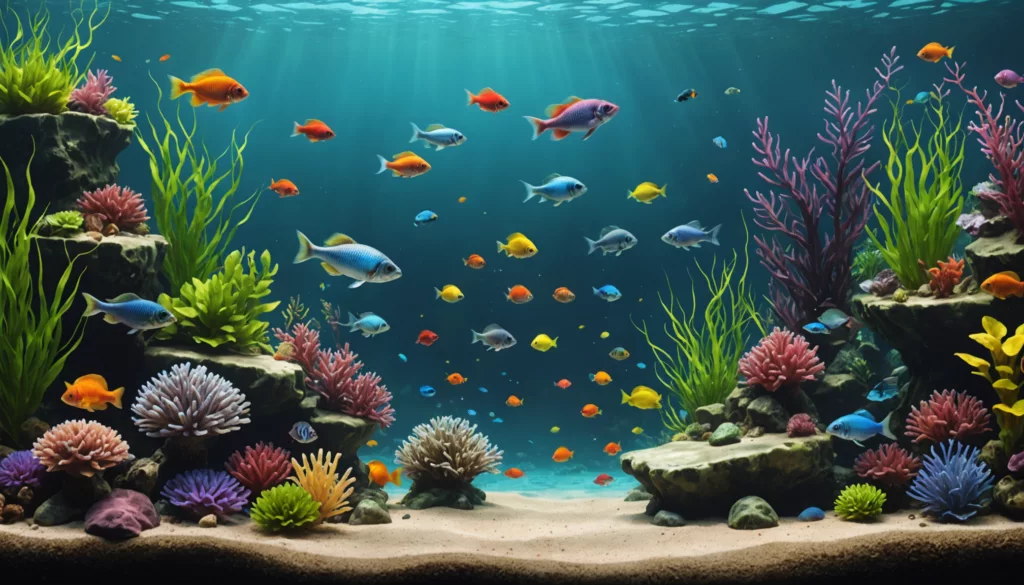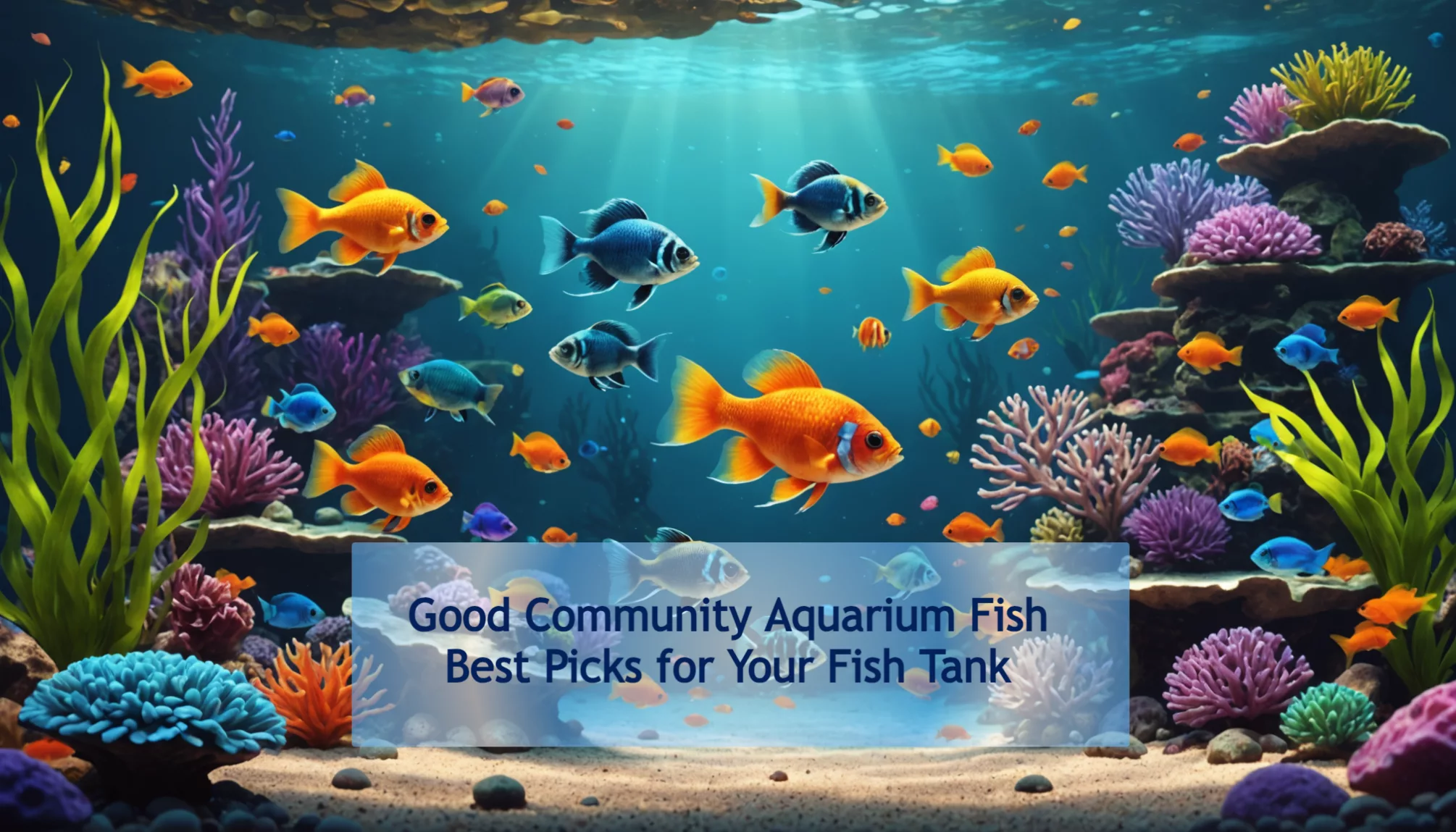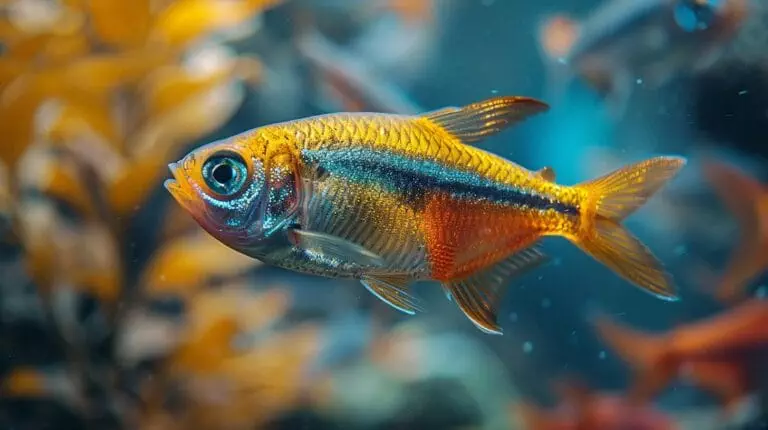Setting up a freshwater tank can feel like a thrilling adventure, especially when you think about all the colorful fish you could include! Choosing good community aquarium fish is key to creating a beautiful, harmonious environment for your aquatic friends. But why does this matter so much? Picking the right fish not only makes your tank look stunning but also ensures that your fish live happily together without fighting or stressing each other out.
If you don’t know what community fish to pick, you might end up with a tank that looks more like a battlefield than a peaceful underwater paradise. In this article, we’ll explore what makes a fish perfect for a community tank, highlight some of the best species like guppies and corydoras catfish, and share essential tips for maintaining a joyful aquarium. Get ready to dive into the exciting world of community fish and learn how to build a thriving aquatic community!
What Are Good Community Aquarium Fish?

Understanding Community Fish for Freshwater Aquariums
Community fish are species that coexist peacefully in a shared aquarium. These fish do not show aggressive behavior, creating a harmonious environment. They thrive in similar water conditions, making them ideal for freshwater tanks. When selecting good community aquarium fish, understanding their compatibility is essential. Fish that live well together contribute to a vibrant and lively aquarium.
Key Traits of Good Community Fish
Good community fish share several important traits that make them suitable for a community tank. These include:
- Non-Territorial Behavior: They do not defend specific areas of the tank, allowing for peaceful interaction.
- Peaceful Temperament: Their calm nature helps reduce stress among all tank inhabitants.
- Adaptability: These fish can adjust to various water conditions, such as temperature and pH levels, which is crucial for a balanced community.
- Size Considerations: Good community fish are generally small to medium-sized, fitting comfortably in most aquarium setups, including 10-gallon tanks.
These traits ensure friendly interactions among different fish species, benefiting the aquarium’s overall health.
Importance of a Balanced Community Tank
A balanced community tank is vital for fish health. Maintaining this balance prevents stress, which can lead to illness and even fish death. Key factors to consider include:
- Proper Stocking Levels: Avoid overcrowding the tank. Each fish needs enough space to swim and establish its territory.
- Compatible Species: Researching species compatibility is essential. Some fish may display aggression toward others, leading to conflicts.
- Environmental Conditions: Proper water quality, temperature, and pH levels are crucial. Most community fish prefer a temperature range of 74°F to 78°F (23°C to 26°C) and a pH of 6.5 to 7.5.
Focusing on these aspects helps create a thriving environment for fish, promoting health and reducing stress-related issues. Understanding community fish and their requirements lays the foundation for a successful and enjoyable aquarium. Choosing the right species and maintaining a balanced environment fosters a beautiful aquatic community.
Top Recommendations for Community Fish

When setting up a community aquarium, selecting the right fish is essential. The following three species are excellent options for both beginners and experienced aquarists. They are peaceful, colorful, and easy to care for, creating a harmonious tank environment.
Guppy: Colorful and Easy to Care For
- Description: Guppies are lively fish that grow to about 1-2 inches long. They are known for their bright colors and patterns, which vary widely. Guppies are hardy and can thrive in many water conditions.
- Care Level: Easy
- Ideal Conditions: Guppies prefer water temperatures between 72°F and 82°F with a pH level of 6.8 to 7.8. A 10-gallon tank is recommended for a larger group to ensure their well-being.
- Benefits: Guppies are livebearers, meaning they breed quickly. This can be exciting for new aquarists, but managing their population is crucial to avoid overcrowding.
Corydoras Catfish: The Bottom Dwellers
- Description: Corydoras are peaceful bottom-dwelling fish that typically grow to about 2-3 inches long. They are excellent scavengers, keeping the tank clean by consuming leftover food and debris. These fish thrive in groups and are friendly.
- Care Level: Easy
- Ideal Conditions: Corydoras prefer slightly acidic to neutral water, with temperatures between 70°F and 78°F and a pH level of 6.0 to 7.0. A 30-gallon tank is ideal for a small group of 4-6 Corydoras.
- Benefits: Their social behavior makes them enjoyable to observe as they interact. They also help maintain tank cleanliness, reducing maintenance needs.
Dwarf Gourami: Peaceful and Attractive
- Description: Dwarf Gouramis are vibrant fish with a calm demeanor. They typically reach an adult size of 3-4 inches. As labyrinth fish, they can breathe air directly from the surface, adding uniqueness to their nature.
- Care Level: Moderate
- Ideal Conditions: Dwarf Gouramis thrive in water temperatures between 78°F and 82°F and a pH range of 6.0 to 8.0. They enjoy a well-planted tank with plenty of hiding spots.
- Benefits: Their peaceful nature allows them to coexist with many community fish. They also bring a splash of color to the aquarium and are relatively easy to care for, making them suitable for beginners.
Summary Table of Recommended Fish
| Fish Type | Adult Size | Care Level | Ideal Temperature | pH Level | Tank Size |
|---|---|---|---|---|---|
| Guppy | 1-2 inches | Easy | 72°F – 82°F | 6.8 – 7.8 | 10 gallons |
| Corydoras Catfish | 2-3 inches | Easy | 70°F – 78°F | 6.0 – 7.0 | 30 gallons |
| Dwarf Gourami | 3-4 inches | Moderate | 78°F – 82°F | 6.0 – 8.0 | 20 gallons |
Best Practices for Setting Up a Community Tank

Creating a community tank is an exciting adventure for aquarium enthusiasts. A well-planned community tank provides a vibrant and harmonious environment for various fish species. To ensure success, it is essential to follow best practices when setting up a community aquarium. This section covers crucial aspects, including choosing the right fish species, maintaining ideal water conditions, aquascaping tips, and long-term care.
Choosing the Right Fish Species for Your Aquarium
Selecting compatible fish species is vital for a thriving community tank. Fish should be peaceful and similar in size to prevent aggressive behaviors. Here are important steps to follow:
- Research Compatibility: Some fish, like African cichlids, can be aggressive or territorial. Avoid these species in a community tank. Instead, choose peaceful community fish such as Guppies, Tetras, and Corydoras.
- Consider Size and Adult Size: Ensure that the fish are compatible in size. For example, smaller fish like Guppies grow to about 1.5 inches. A 10-gallon tank suits smaller species, while a 30-gallon tank is better for larger fish.
- Choose Active Species: Select active schooling fish that thrive in groups. Fish like Neon Tetras or Harlequin Rasboras prefer to be in schools of at least six. This setup provides them a sense of security and reduces stress.
Ideal Water Conditions for Community Fish
Maintaining the right water conditions is crucial for the health of community fish. Most community fish prefer specific water parameters, which include:
- pH Levels: Most community fish thrive in slightly acidic to neutral water with a pH range of 6.5 to 7.5. Regularly test the water to ensure it stays within this range.
- Temperature: The ideal temperature for community fish is typically between 74°F and 78°F. Use an aquarium heater to maintain a stable temperature.
- Water Hardness: Soft water is preferred for many community fish. However, some species tolerate a wider range of parameters. Research the specific needs of each fish species to ensure optimal conditions.
Aquascaping Tips for a Thriving Community Environment
A well-designed aquarium not only looks beautiful but also provides habitat and security for fish. Here are some aquascaping tips:
- Use Live Plants: Adding live plants creates hiding spots and improves water quality. Plants like Java Fern and Anubias are excellent options for beginners.
- Create Hiding Spots: Incorporate rocks, driftwood, and decorations to provide security for shy fish. These hiding spots help reduce stress and aggression among tank inhabitants.
- Plan Open Spaces: While hiding spots are important, include open swimming areas. This allows active fish to roam freely and promotes a natural environment.
Long-term Care and Maintenance of Community Tanks
Caring for a community tank involves consistent maintenance and observation. Here are best practices for long-term care:
- Regular Water Testing: Monitor water quality frequently. Check parameters like ammonia, nitrite, nitrate, and pH to ensure a healthy environment for fish.
- Observe Fish Behavior: Regularly watch fish for signs of distress, such as hiding or aggression. This observation helps identify potential problems before they escalate.
- Perform Scheduled Maintenance: Schedule regular tasks like water changes, filter cleaning, and plant pruning. This practice promotes a clean and healthy environment.
- Monitor Fish Growth: As fish grow, ensure they have adequate space. Overcrowding can lead to stress and health issues.
Common Signs of Distress in Community Fish

Recognizing Stress Behaviors in Aquarium Fish
Fish in community aquariums can show various signs of stress. Recognizing these signs is essential for keeping a healthy tank. Common indicators include:
- Hiding: If fish start to hide more often in rocks, plants, or decorations, it may indicate stress.
- Aggression: Increased fighting or chasing among tank mates can signal territorial disputes or stress from poor conditions.
- Lethargy: Fish that are less active than normal might be experiencing stress or illness. They may swim slowly or stay in one spot.
Understanding these behaviors helps ensure a healthy aquarium environment. Observing fish regularly can catch these signs early and allow for prompt action. These behaviors are widely recognized as stress indicators in community fish. [Aquarium Source]
How to Address Common Issues in a Fish Tank
Addressing common issues in a fish tank can enhance the health and happiness of community fish. Here are some straightforward steps:
- Water Quality: Regularly test water for pH, ammonia, nitrite, and nitrate levels. Keeping water conditions stable is crucial for fish health.
- Tank Size: Ensure the tank is large enough for the number of fish. Overcrowding can lead to stress and aggression. For example, a 10-gallon tank is suitable for small community fish, while a 30-gallon tank is better for larger schools.
- Food and Diet: Provide a balanced diet tailored to each species. High-quality flakes, pellets, and occasional treats like frozen bloodworms can help prevent malnutrition.
By following these practices, fish owners create a healthier environment for their aquatic pets. Maintaining water quality, proper tank size, and nutrition are widely recommended by aquarists and experts. [The Spruce Pets]
When to Consult a Fish Behaviorist
Sometimes, fish may show ongoing signs of distress despite changes in tank conditions. In such cases, consulting a fish behaviorist or a veterinarian specializing in aquatic animals may be necessary. Situations that may require professional help include:
- Persistent Distress: If fish continue to hide, fight, or appear lethargic even after improving water quality and tank conditions, it may be time to seek professional advice.
- Signs of Illness: Unusual swimming patterns, loss of color, or physical abnormalities like black spots can indicate illness. These symptoms should not be overlooked.
- Behavioral Changes: If new fish are introduced and aggression between males or other stress behaviors arise, a professional can assess compatibility and suggest solutions.
Conclusion
In conclusion, selecting the right community fish for your freshwater tank can lead to a vibrant and harmonious aquatic environment. Remember, fish like guppies and dwarf gouramis are not only beautiful but also peaceful, making them perfect additions to your aquarium. It’s essential to maintain ideal water conditions and create a balanced community tank to ensure all your fish thrive together.
As you dive deeper into the world of aquarium keeping, don’t hesitate to explore more community fish species and discover the exciting possibilities they bring to your tank. Keep learning and experimenting, and your aquarium will be a stunning underwater paradise!
Frequently Asked Questions
1. Can All Fish Coexist in a Community Tank?
Not all fish can thrive together in a community tank. It is essential to select peaceful species that get along well. Recommended options include:
- Peaceful Options:
- Tetras
- Guppies
- Corydoras Catfish
These fish typically show non-aggressive behavior, allowing them to live harmoniously. However, mixing in aggressive fish, like African Cichlids, can create stress and conflict. Careful planning is crucial before adding any new fish.
- Fish to Avoid:
- Aggressive species, such as African Cichlids
2. What Are the Best Fish for Beginners?
Choosing hardy fish is crucial for new aquarists. Ideal species include:
- Beginner-Friendly Fish:
- Guppies: Colorful and active, perfect for small tanks.
- Neon Tetras: Small schooling fish that thrive in groups.
- Corydoras Catfish: Bottom dwellers that help keep the tank clean.
3. How to Introduce New Fish into Your Aquarium
Acclimating new fish is key to reducing stress and ensuring successful integration. Follow these steps:
- Gently float the sealed bag in the aquarium for 15-20 minutes to allow the water temperature to adjust to match the temperature inside the bag.
- Gradually mix a small amount of tank water into the bag.
- Release the fish into the tank.






